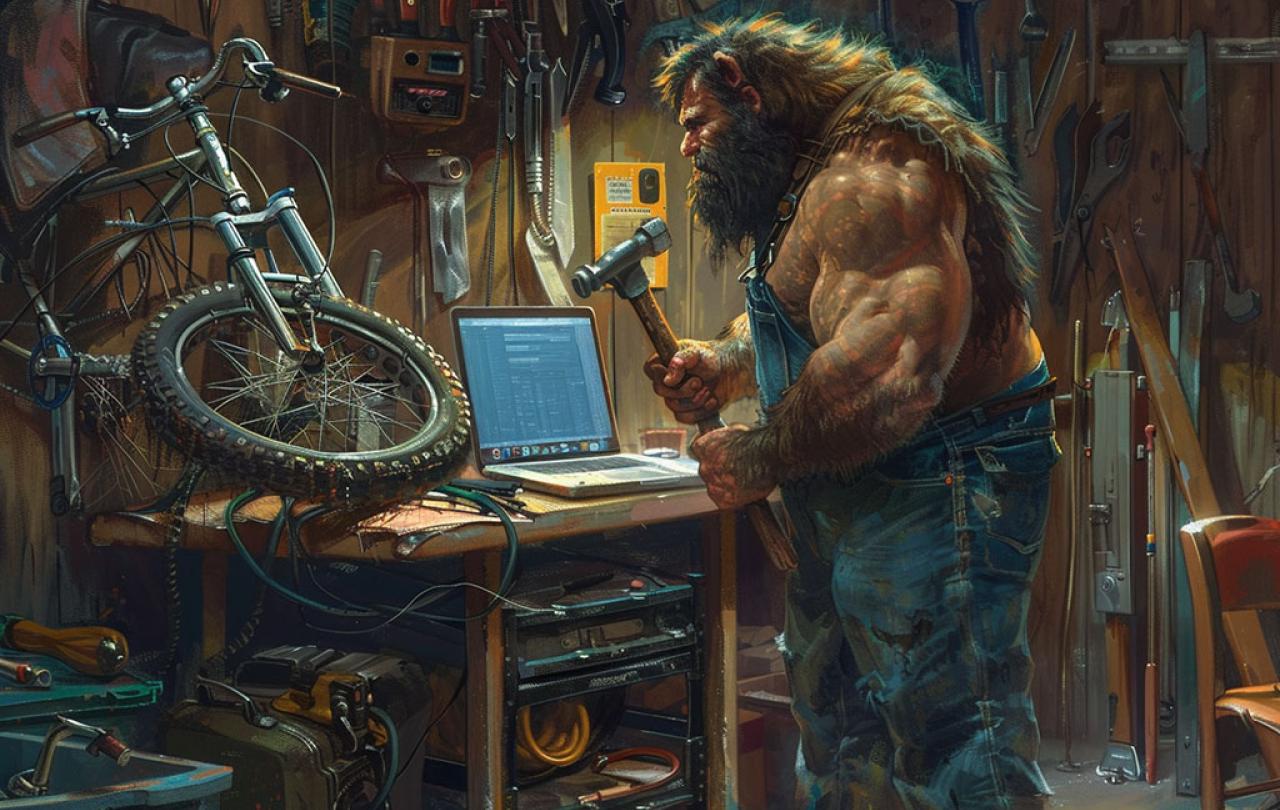
My son was born in February last year and it seems that every day he is developing new skills or facial expressions and adorable quirks. Just the other day he was playing with some wooden blocks and when they inevitably fell over, he let out the most adorable giggle. As you can guess I immediately reached for my phone so that I could capture the moment. Moments like this happen all the time in the life of a modern parent- we want to share with our spouse, family, and friends or just capture the moment for ourselves because it’s something we treasure. And yet, in this series of articles I would like to consider this moment, and the thousands like it that take place in a technological society, and ask: is everything as benign as it seems?
There are two ideas that often come up whenever people talk about technology. The first is that technology is basically ‘neutral’, that technology only becomes good or bad depending on what you are doing with it. “Look at a hammer,” someone might say, “there is nothing intrinsically good or bad about this hammer, only the end result is good or bad depending on whether I’m using it to hit nails or people!” On this reading of technology, the only important questions relate to the consequences of use.
If technology is neutral, then the primary concern for users, legislators and technologists is the consequences of technology, and not the technology itself. The only way to ensure that the technology is used for good is to ensure, somehow, that more good people will use the technology for good things than bad people using it for bad things. Often this idea will present itself as a conversation about competing freedoms: very few people (with some important exceptions, see this article from Ezra Klein) are debating whether there is something intrinsically problematic about the app formerly known as Twitter, most discussion revolves around how to maintain the freedom of good users while curtailing the freedom of bad users.
We assume that these tools of social interaction like Facebook and Instagram are, in and of themselves, perfectly benign. We are encouraged to think this by massive corporations who have a vested interest in maintaining our use of their platforms, and at first glance, they seem completely harmless: what could possibly be the problem with a website in which grandma can share photos of her cat? And while the dark underbelly of these platforms has violent real-world consequences – like the rise of antisemitism and anti-Muslim hatred – the solution is primarily imagined as a matter of dealing with ‘bad actors’ rather than anything intrinsically problematic with the platforms themselves.
Jobs here draws a straight-line comparison between the bicycle and the PC. As far as Jobs is concerned, there is no quantitative difference in kind between the two tools.
The second idea is related but somewhat different: Advocates of modern technology will suggest that humanity has been using technology ever since there were humans and therefore all this modern technology is not really anything to worry about. “Yes, modern technology looks scary,” someone might say, “but it’s really nothing to worry about, humans have been using tools since the Stone Age don’t you know!” This view proposes that because hammers are technology, and all technology is the same, there is, therefore, no difference between a hammer and the internet, or between the internet and a cyborg.
This second idea tends to be accompanied by an emphasis on the slow and steady evolution of technology and by highlighting the fact that at every major technological advancement there have been naysayers decrying the latest innovation. (Even Plato was suspicious of writing when that was invented). Taken as part of a very long view of human history, the technological innovations of the last 100 years seem to be a normal and natural part of the evolution of our species which has always set itself apart from the rest of the animal kingdom in its use of technology.
Steve Jobs gives a good example of this in an interview he gave about the development PC:
“I think one of the things that really separates us from the high primates is that we’re tool builders. I read a study that measured the efficiency of locomotion for various species on the planet. The condors used the least energy to move a kilometer. And humans came in with a rather unimpressive showing about a third of the way down the list… not too proud of a showing for the crown of creation… But then somebody at Scientific American had the insight to test the efficiency of locomotion for a man on a bicycle. And a human on a bicycle blew the condor away – completely off the top of the charts.
And that’s what a computer is to me… It’s the most remarkable tool we’ve ever come up with… It’s the equivalent of a bicycle for our minds”
Notice that Jobs here draws a straight-line comparison between the bicycle and the PC. As far as Jobs is concerned, there is no quantitative difference in kind between the two tools: one is more complex than the other but otherwise, they are just technologies that expand human capacity. “A Bicycle for our minds” is a fascinating way to describe a computer because it implies that nothing about our minds will be changed, they’ll just be a little bit faster.
And yet, despite the attempts of thought leaders like Jobs to convince us that modern technology is entirely benign, many of us are left with a natural suspicion that there is more going on. As a priest in the Church of England, I often have conversations with parishioners and members of the public who are looking for language or a framework which describes the instinctive recognition that something has changed at some point (fairly recently) about the nature of the technology that we use, or the way that it influences our lives. That modern technology is not simply the natural extension of the sorts of tools that humans have been using since the Stone Age and that modern technology is not neutral but in significant ways has already had an effect regardless of how we might use it. How do we respond to such articulate and thoughtful people such as Steve Jobs who make a compelling case that modern technology is neutral and natural?
I often have conversations with parishioners who are looking for language or a framework which describes the instinctive recognition that something has changed about the nature of the technology that we use, or the way that it influences our lives.
Thinking back to that moment with my son when he giggles and I take a photo of him, at first glance it seems completely innocuous. But what resources are available if I did want to think more carefully about that moment (and the many like it) which suffuse my daily life? Thankfully there is a growing body of literature from philosophers and theologians who are thinking about the impact of modern technology on the human condition. In the next two articles I would like to introduce the work of Martin Heidegger, outline his criticism of modern technology, showing how he challenges the idea that technology is simply a natural extension of human capacity or a neutral tool.
Heidegger is a complex character in philosophy and in Western history. There is no getting around the fact that he was a supporter of the Nazi Party during the second world war. His politics have been widely condemned and rightly so, nevertheless, his insights on the nature of modern technology continue to this day to provide insights that are useful. His claim is that modern technology essentially and inevitably changes our relationship with the world in which we live and even with ourselves. It is this claim, and Heidegger’s suggested solution, that I will unpack in the next two articles.










